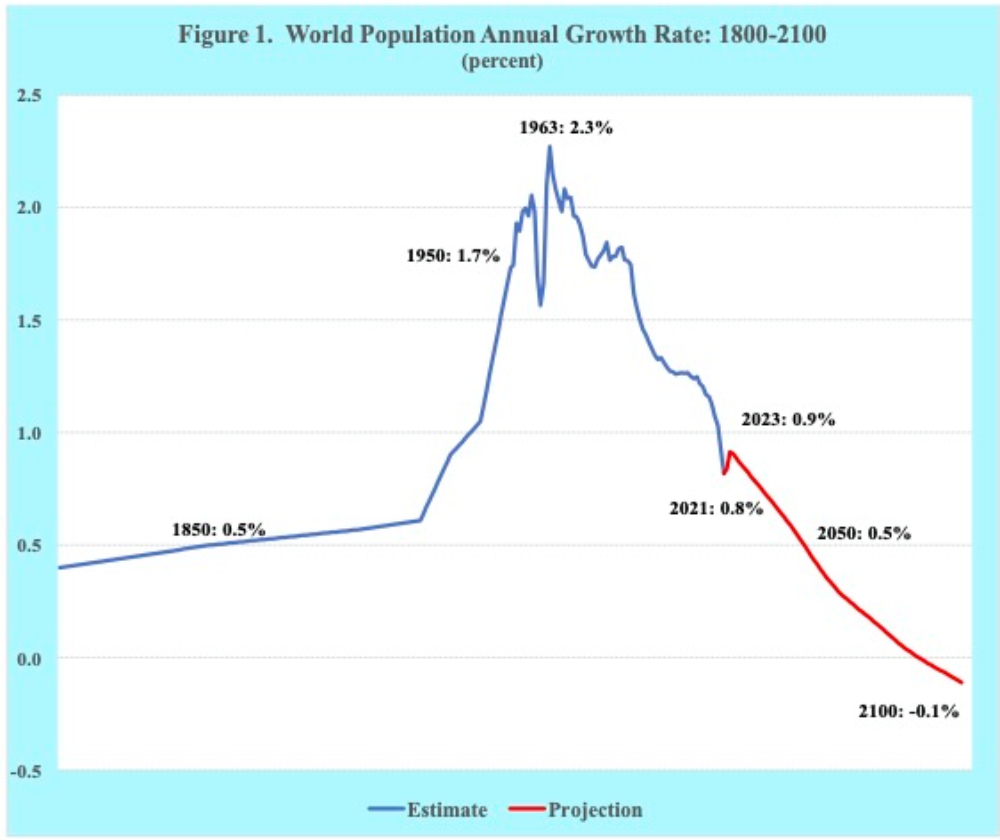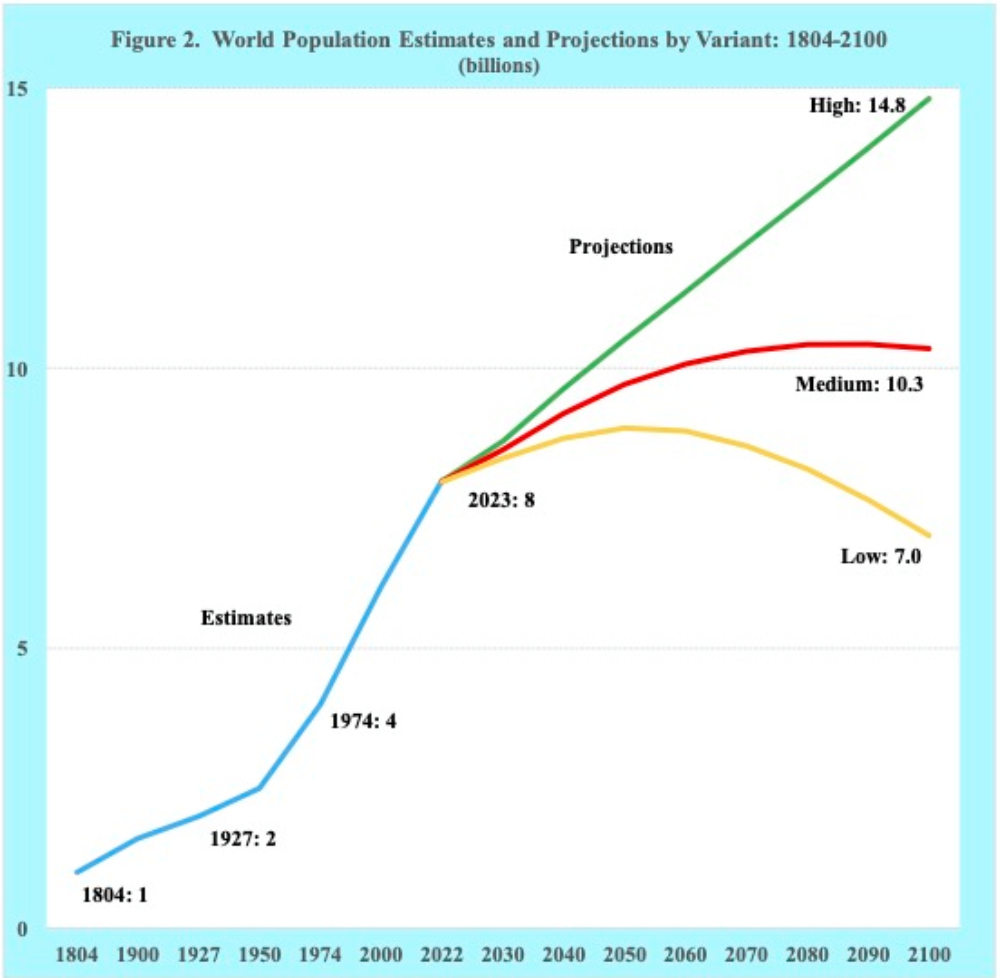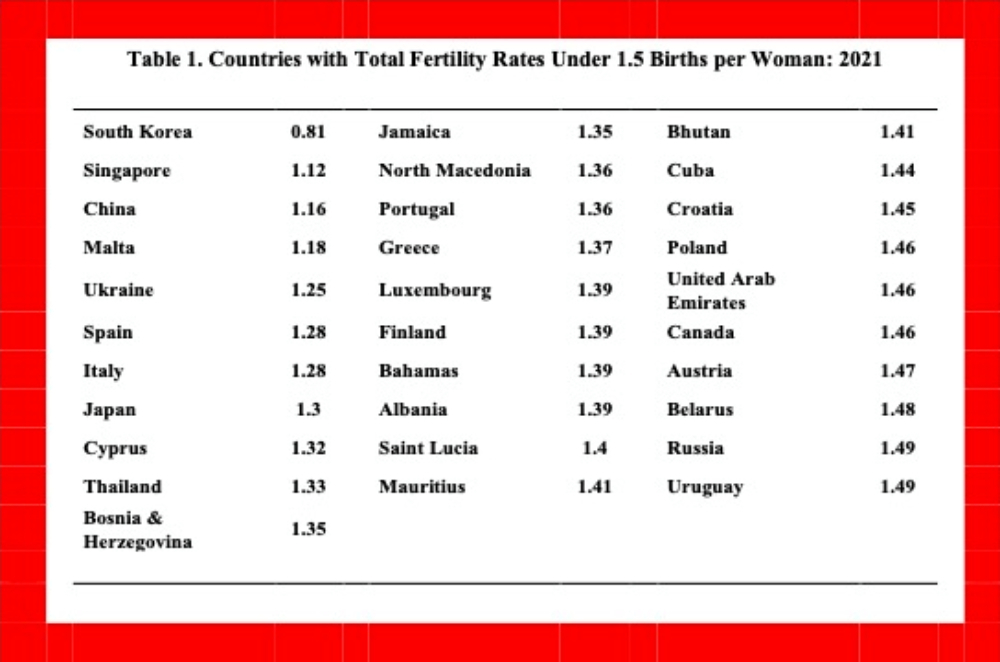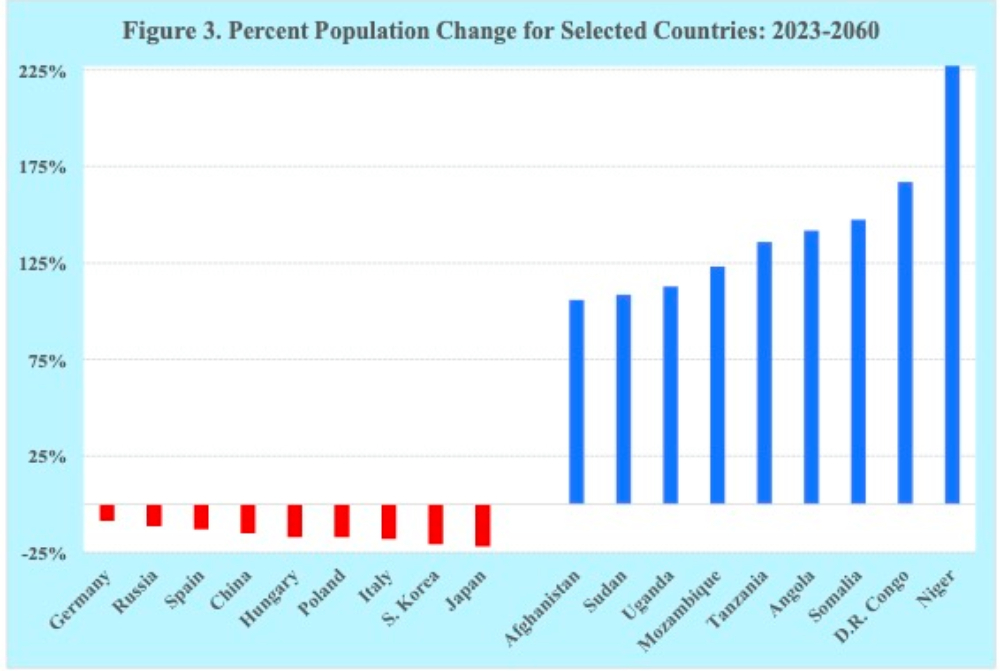A world population of 8,000,000,000 human beings is simply not enough for planet Earth. Many more people are needed on planet Earth to avoid the total collapse of humanity.
As some have warned, population collapse due to low birth rates is civilization’s greatest threat. That incontrovertible existential threat poses a far bigger risk for humanity than the frequently mentioned global warming. If people don’t have more babies very soon, they predict, civilization will crumble, resulting in an empty planet with no humans.
In particular, not enough people due to rapidly declining birth rates has brought about demographic decline, population aging and economic stagnation. Moreover, as others have stressed, baby-bust economies, worker shortages and aging populations are creating catastrophes for all sectors of society and raising fears of national extinction.
The repeated calls by climatologists, environmentalists, scientists, celebrities and others for world population stabilization are simply demographic overreactions to scientific research findings and forecasts.
Government officials, policymakers and business leaders seek continued population growth to ensure technological progress, economic growth, increased profits and growing labor forces. Accordingly, they have chosen to dismiss the alarmist calls for world population stabilization and instead promote population growth.
Most governments do not believe that population growth is a significant factor in climate change, as the Intergovernmental Panel on Climate Change (IPCC) claims. The often-cited negative effects of population growth on the planet’s climate and environment are considered nothing more than catastrophic demographic rhetoric based on scientific models, forecasts and published research.
It is indeed the case that the planet is experiencing higher average global temperatures. As the United Nations has forecast, it is near-certain that 2023 to 2027 will be the warmest five-year period ever recorded, as greenhouse gases and El Nino combine to send temperatures soaring. However, this is not a fact but simply a weather forecast by a committee of meteorologists.
It is also true that global warming is also resulting in droughts and hurricanes, heatwaves, floods, rising sea levels and high tides, degraded environments, endangered wildlife, increasing resource scarcity and growing pollution. And according to UNHCR, more than a billion people are expected to be “climate refugees” by 2050 due to climate change and natural disasters.
However, the various consequences of climate change are simply normally occurring phenomena on planet Earth. They are the result of development, economic growth and increased production, consumption and affluence.
In fact, such phenomena have been occurring for centuries as the wealth of nations, businesses and individuals has expanded. Since 2020, 63 percent of the new wealth generated went to the richest one percent of people. Also in 2023, the number of billionaires in the world has grown to 2,640, which is 19 times the amount there was in 1987.
Moreover, technology, coupled with developmental efforts and financial assistance from wealthy investors will certainly be able to address many of the possible consequences of climate change. Excessive heat waves can be addressed by air conditioning. Climate refugees can be relocated to regions with more favorable living conditions that need workers.
The rise of global temperatures can be curbed by geoengineering to block out the sun’s rays with artificial shields placed high in the atmosphere. Pollution can be tackled by advanced methods of filtration, increased recycling of materials, and the eating of plastics.
To address possible future floods, droughts, and storms as well as rising sea levels, modern and rapidly improving methods of engineering, construction, robotics, and artificial intelligence can develop inexpensive solutions. Possible remedies could include expansive houseboats, elevated waterproof buildings, deep water oases, floating cities, and government-sponsored insurance programs for rebuilding.
Human populations should also not be concerned about the recently announced scientific finding that almost half the world’s species are experiencing rapid population decline. Animal species have been declining for centuries, with some going extinct, such as dinosaurs, wooly mammoths, and dodos. The results of those declines and extinctions have not retarded the progress of human populations.
Furthermore, fears that food production will not keep up with population growth have preoccupied human societies for ages. In 2023 approximately 350 million people, double the number in 2020, are facing high levels of food insecurity.
That figure, however, amounts to only about 5 percent of the world’s population. And in striking contrast, approximately 13 percent of the world’s population are obese.
Also, during the past two hundred years of impressive social and economic development, the world population’s annual rate of growth increased considerably. Between 1850 and 1950, the world’s annual rate of population growth more than tripled, i.e., from 0.5 to 1.7 percent.
In the 1960s, with global fertility rates of about 5 births per woman on average, the world population grew at a robust annual rate of about two percent, reaching a high of 2.3 percent in 1963. Since the fabulous peak levels of the 1960s, the world’s annual rate of population growth has unfortunately steadily declined (Figure 1).
 Source: United Nations 1950-2100 and Our World in Data 1800-1950.
Source: United Nations 1950-2100 and Our World in Data 1800-1950.
By 2021, with the global fertility rate having fallen to 2.3 births per woman, the world population’s growth rate declined to 0.8 percent, or about one-third of the peak level achieved in 1963. With the effects of the COVID pandemic diminishing, the world’s annual rate of population growth is expected to increase slightly to 0.9 percent in 2023.
Due to declining fertility rates, the world’s annual rate of population growth is expected to fall throughout the remainder of the 21st century. By 2050 with average global fertility is expected to be at the replacement level of about 2.1 births per woman, the annual rate of population growth is projected to decline to 0.5 percent, or about one-quarter of the 1950 rate of 1.7 percent and close to the same rate experienced in 1850.
Furthermore, by the close of the 21st century, the average global fertility rate is expected to fall to 1.8 births per woman, well below the replacement level. Consequently, the annual growth rate of the world population in 2100 is projected to reach a “negative” 0.1 percent.
As a result of the expected slower rates of global demographic growth, the world’s current population of 8 billion is projected to peak in about sixty years at 10.4 billion, according to the United Nations medium variant projection. It then is expected to begin slowly decreasing, reaching 10.3 billion by 2100 (Figure 2).
However, future fertility rates may fall more rapidly than currently expected, which is the underlying assumption of the United Nations' low variant population projection. According to that projection, as average global fertility falls well below the replacement level, the world population peaks at 8.9 billion around mid-century and then precipitously collapses to 7 billion by the close of the 21st century.
A more promising demographic outlook for the world population is the United Nations' high variant population projection. That variant assumes current fertility rates increase slightly and then remain well above the replacement level throughout the 21st century. Accordingly, the world population reaches 10.5 billion by mid-century and increases to a robust 14.8 billion by 2100.
Turning to the vital demographic ingredient of births, today, approximately 100 countries worldwide, including the largest 15 countries by GDP, have a fertility rate below the replacement level of 2.1 births per woman. Moreover, the fertility rates of some thirty countries, including China, Italy, Japan, Russia and South Korea, were less than 1.5 births per woman in 2021 (Table 1).
At the other extreme are many developing countries with fertility rates well above the replacement level. About two dozen countries, accounting for nearly 10 percent of the world’s population, have fertility rates above four births per woman.
The substantial differences in fertility rates are expected to result in the populations of some countries declining while others increase rapidly. The populations of China, Germany, Italy, Japan, Russia, South Korea, and Spain, for example, are expected to experience population collapses of between 10 to 22 percent between 2023 and 2060. In contrast, the populations of about 25 countries, including Afghanistan, Sudan, Uganda, Tanzania, Angola, Somalia, the Democratic Republic of the Congo and Niger, are expected to more than double in size by 2060 (Figure 3).
In sum, as many have warned, population collapse due to low birth rates is humanity’s greatest threat, far exceeding concerns about global warming expressed by scientists, environmentalists and many others.
To effectively address that primary existential threat to humanity, low fertility rates need to increase and remain above the replacement level of about two births per woman. As governments have increasingly realized, incentives, as well as disincentives, are needed to encourage couples, especially women, to have and raise more children.
The world must avoid the crumbling of human civilization due to low fertility rates. Women need to have many more births to ensure the continued growth and economic prosperity of the world’s current population of 8 billion, which will hopefully double to 16 billion people well before the close of the 21st century.


















